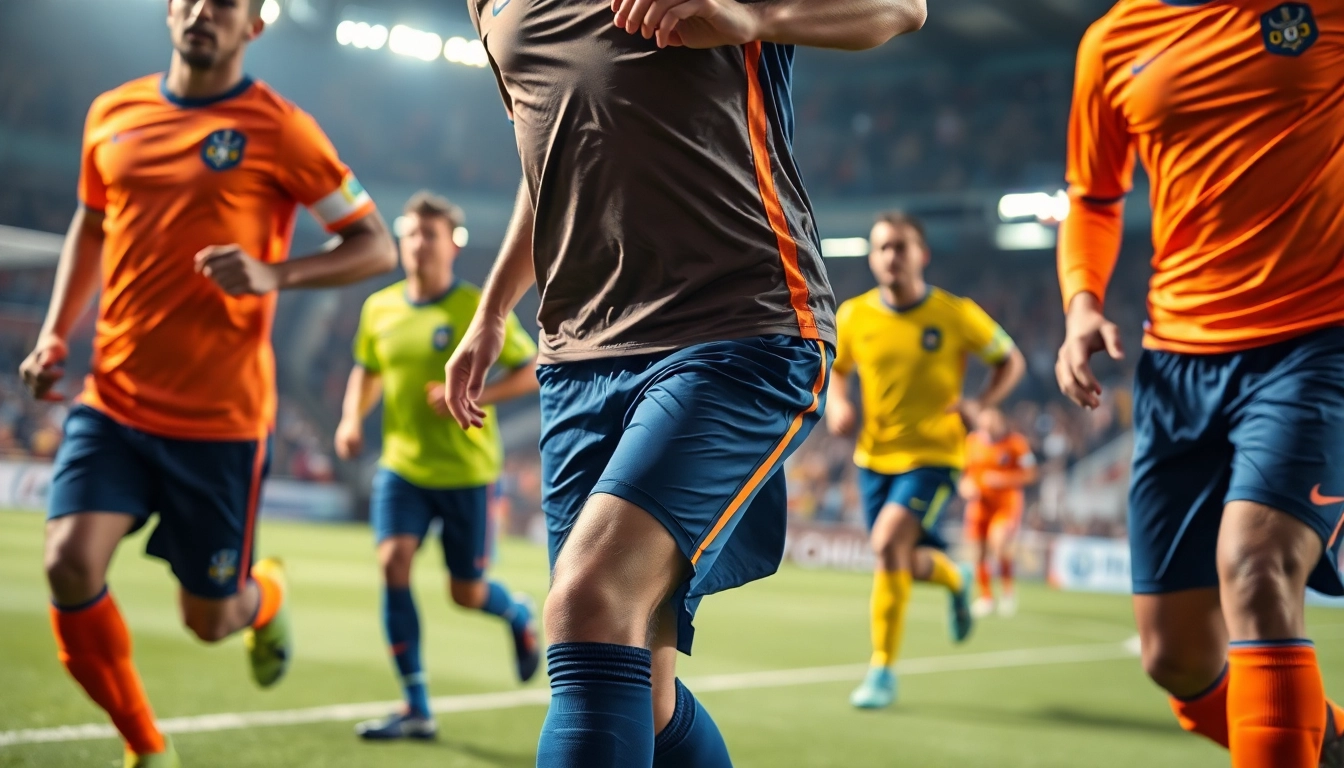Understanding the Importance of Quality Soccer Uniforms
In the world of soccer, a player’s performance and the team’s overall success are heavily influenced by the gear they wear. Among these, Soccer Uniforms stand out as essential components that blend function, comfort, and team identity. High-quality soccer uniforms do more than just create a cohesive look—they impact player performance by offering durability, breathability, and a perfect fit. They also foster team spirit and pride, crucial elements in competitive sports. With the rapid evolution of sports apparel technology, selecting the right soccer uniform involves understanding material innovations, design principles, and customization options that can elevate a team’s game and presentation.
Features to Look for in Top-Grade Soccer Uniforms
Durability and Breathability
Top-tier soccer uniforms are crafted from fabrics that withstand rigorous movement and frequent washing. Materials like polyester blends, often combined with mesh panels, provide the essential durability needed for intense gameplay. These fabrics are engineered to resist tearing and stretching, ensuring the uniform maintains its shape and appearance over time. Breathability is equally vital, as players generate a considerable amount of heat during matches. Moisture-wicking fabrics that quickly draw sweat away from the body help keep players dry and comfortable, reducing fatigue and skin irritations that can detract from performance.
Customization Options and Branding Opportunities
Customization elevates a team’s identity through personalized logos, numbers, slogans, and unique design elements. Modern manufacturing techniques enable extensive customization options, including color schemes aligned with team branding, woven or printed logos, and even sublimated patterns. These options allow teams to stand out visually while reinforcing brand recognition. Engaging in a strategic branding process—such as color psychology and consistent logo placement—can significantly boost team cohesion and fan engagement.
Fit and Comfort for Different Player Sizes
An optimal fit is fundamental for performance and comfort. Uniforms should accommodate various body types without restricting movement or causing discomfort. Leading manufacturers offer multiple sizing options and fit styles—such as slim-fit, relaxed, or tailored cuts—to suit individual preferences and playing styles. Proper fit reduces distractions during play, prevents chafing, and ensures players feel confident and agile on the field.
Design Trends and Customization Ideas
Color Schemes and Unique Patterns
Current trends favor bold, vibrant colors paired with intricate patterns or gradient effects that capture attention. Teams increasingly opt for custom color combinations that reflect their heritage, city, or mascot. Geometric patterns, subtle gradients, and tech-inspired designs are popular choices, providing a modern aesthetic that resonates with both players and fans.
Incorporating Logos, Numbers, and Slogans
Effective integration of logos and identifiers enhances team branding. Logos should be prominently placed on the chest or sleeves, while numbers are typically positioned on the back and front for visibility. Slogans or mottoes can be subtly incorporated into the design to reinforce team values. Using high-quality embroidery or silkscreen printing ensures longevity and clarity of these elements, even after multiple washes.
Themed Series and International Styles
Many teams explore themed series or international-inspired designs to showcase diversity and cultural pride. These include patterns reminiscent of national flags, traditional motifs, or vibrant cultural colors. Such designs foster a sense of community and identity, creating a memorable visual identity that connects players with their heritage and fans worldwide.
How to Order and Maintain Your Soccer Uniforms
Selecting a Reliable Supplier and Customization Partner
Partnering with reputable manufacturers like Xara Soccer or Scoresports ensures access to quality materials, timely delivery, and expert customization. It’s important to review supplier portfolios, customer testimonials, and sample products before committing. Open communication about design specifications, sizing, and order quantities guarantees a smooth process from concept to delivery.
Sizing Guides and Sample Orders
Accurate sizing is vital to prevent discrepancies and returns. Most suppliers provide detailed sizing charts, and some offer sample kits to test fit and material quality. Conducting sample orders allows teams to assess comfort, fit, and fabric performance before placing larger orders, minimizing costly errors.
Cleaning Tips and Longevity of Uniforms
To prolong the lifespan of soccer uniforms, follow manufacturer-recommended washing instructions: use cold water, avoid bleach, and tumble dry on low or air dry. Regularly inspecting uniforms for wear and tear helps identify issues early, allowing for repairs or replacements. Keeping uniforms clean maintains their appearance and team image, crucial for matches and promotional activities.
Performance Metrics and Making the Right Investment
Assessing Cost vs. Quality
While budget constraints are common, sacrificing quality can lead to higher long-term costs due to frequent replacements or compromised performance. Investing in durable, technologically advanced uniforms offers greater value through enhanced player comfort, better materials, and customizable branding options. Consider the total cost of ownership versus initial expenditure to make informed decisions.
Ensuring Timely Delivery and Customer Support
Deadlines are critical, especially for season start dates and tournaments. Choose suppliers with proven on-time delivery records and robust customer support channels. Clear communication and contingency planning—such as backup production options—help avoid last-minute setbacks.
Gathering Feedback for Continuous Improvement
After matches, soliciting players’ and coaches’ feedback on fit, comfort, and durability helps refine future orders. Social media and direct surveys can gather insights that inform design modifications, material choices, and supplier relationships, ensuring the team’s apparel continually matches evolving needs and trends.
